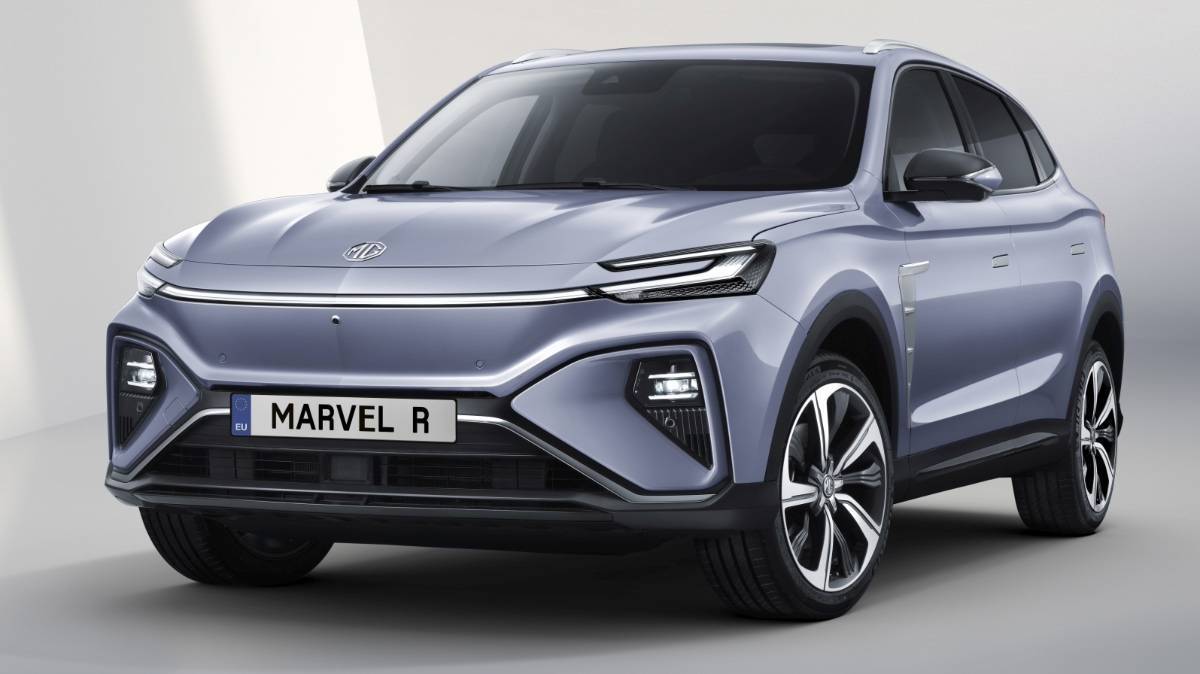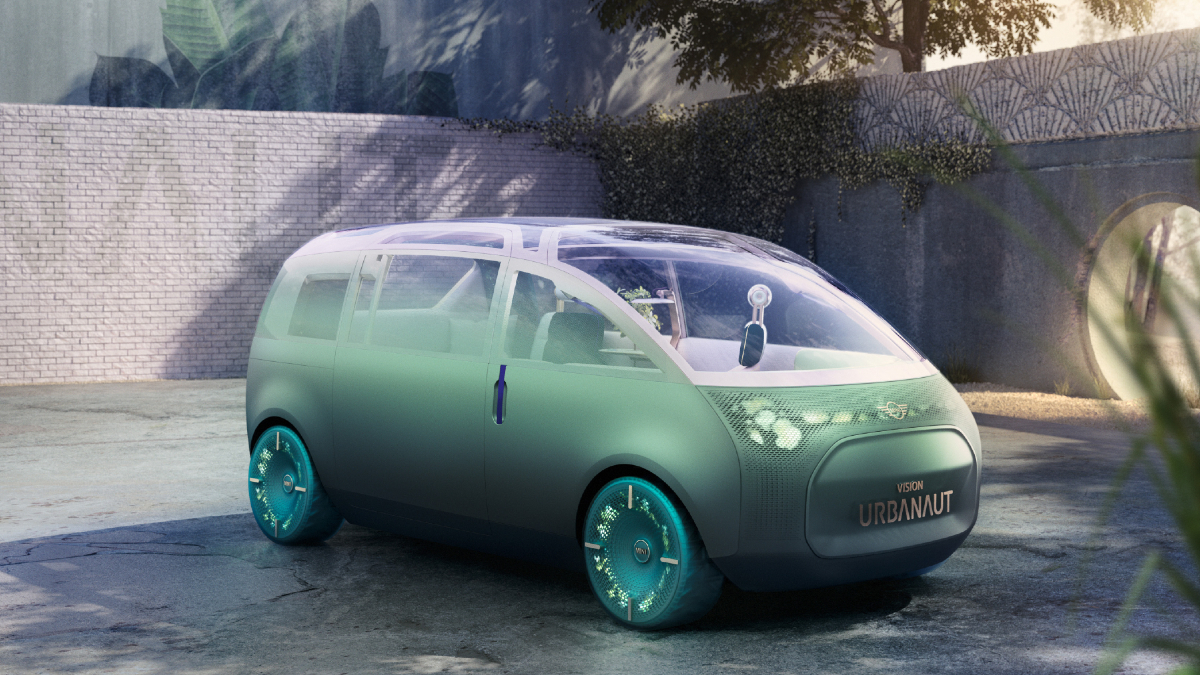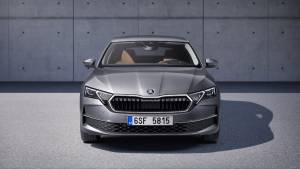5 electric cars we want to see in India
With much of the world gearing up to ban the sale of pure IC-engined by the next decade and carmakers clamouring over each other to get a headstart with this shift, there has never been a steadier stream of EV metal coming our way. Even for us in India, electric cars have slowly but surely started picking up pace and while Indian petrolheads still have a fare few years of IC-engined cars to enjoy, we can't not notice the shiny new EVs everyone else seems to be getting. Here a look at five such EVs we'd like to be sold in India.

MG Marvel R
MG Motor in India has been a strong proponent of electric vehicles, with the MG ZS EV being one of the first out of the blocks. But the brand's European arm has taken things up a few notches in this regard with the Marvel R. The Marvel R carries on from where the Marvel X left off and is MG Motor's answer to the new wave of EVs flooding the European market.
The Marvel R is a reworked Marvel X, as seen at the Auto Expo 2020, but heavily revised with inputs from tech-giant Huawei. The battery has a usable 65 kWh capacity enough for over a 400 km range on the WLTP cycle. But unlike its peers, the Marvel R is quite a brisk machine. Its three electric motors give it AWD capabilities and a combined output of 289PS and a strong 665 Nm. The 0 to 100 kmph time is 4.9s although city dwellers may be more interested in the 1.8s time from 0 to 50 kmph. The top speed is 200 kmph and it takes 30 min to reach 80 per cent charge via a DC fast charger.


Uniquely, the Marvel R has 'Vehicle to Load' (V2L) capabilities which lets you use its battery to charge other electrical appliances. There's even a Tesla-like heat pump for the climate control system to improve battery efficiency. Also, unlike most other EVs, the Marvel R can tow up to 750 kgs, so those with an outdoorsy lifestyle might take to it well. As per the EV norm, there is a larger 19.4-inch portrait-oriented touchscreen and a smaller 12.3-inch driver's display.
With MG Motor India keen on bringing a long-range ZS EV to India with over 500 km range, the Marvel R could fit right in as a more lifestyle/performance-focused offering for those looking to make an early green statement.

Cadillac Lyriq
Its stunningly futuristic looks notwithstanding, just the existence of the Cadillac Lyriq is probably more exciting. If GM - the most traditional of carmakers - is betting its crowning glory, Cadillac, for an electric future, this must be the way forward, right?
The Lyriq, still a show car, sounds suitably revolutionary on paper. It debuts GM's Ultium battery technology and an EV architecture which will eventually trickle down into a flurry of products like the GMC Hummer EV. The Lyriq promises to be quite the driver's car, primarily being rear-wheel driven by a rear-mounted electric motor. More powerful versions will feature a front-mounted motor for AWD capabilities. GM also promises near 50:50 weight distribution although power outputs haven't been revealed yet. GM has however promised that the Lyriq will do over 480 km on a single charge, via the NCMA (nickel-cobalt-manganese-


Similarly revolutionary is the Lyriq's interiors, highlighted by a 33-inch curved display that spans most of the dash's width and uses the best-resolution screen in the industry. Other tech is the newest edition of Cadillac's super cruise with an auto lane-change feature, an augmented reality HUD, remote parking, an active road-noise cancellation function and a 19-speaker AKG audio system.
The Lyriq debuts a new face for Cadillac's EVs, its dark fascia mimics the Cadillac crest which lights up in an array of LEDs and the crisp lines and surfaces. As for seeing the Lyric in India, an EV SUV that matches the best in the world would be the perfect vessel for GM's comeback.

Mazda MX-30
Are you an enthusiastic driver? Do you want to see Mazda in India? If you answered yes for the first question, then the second one is pretty much a no-brainer. Sadly, we don't think the Hiroshima carmaker will be setting up shop in our neck of the woods anytime soon. But if they did, then their first-ever EV could well be a car that appeals to the largest section of our buyers.
The Mazda MX-30 may follow, on paper, the now set blueprint for a city EV. It's got a 35.5 kWh battery structurally integrated into the car's floor, good for a middling 200 km WLTP range. Power is a respectable 143PS and torque is 265 Nm. The MX-30 can do 0 to 100 kmph in 9.7s and a 140 kmph top-speed.


These numbers don't exactly set the world alight but where the Mazda becomes deeply interesting is in the details. It looks unique and athletic, a far-cry from most new EVs and is peppered with touches that recall some of the inventive engineering that make Mazdas so interesting. Starting with the brow to the front end and the svelte coupe roofline, reminiscent of the MX-5. Then there's the suicide-style rear doors, pillarless and a direct link to the revered RX-8 mod-car of the Noughties. Similarly on the inside, you get new-age materials derived from discarded plastic bottles, even the door trims have an air-filled sense to them thanks to this. The wood isn't really wood but actual cork, while the set fabrics are vegan. The minimalist layout is also quite interesting with the layer sections and the two distinct touch-screen panels.
Mazda reserves the MX prefix for its most important products, which no doubt this one is. But there's talk of the brand's famed rotary engine coming back to this model as a range extender, the flaw of this engine type dealt away with. Just the right car to make an impact in one of the most important car markets in the world, we think.

MINI Vision Urbanaut
A Mini from the future, the Vision Urbanaut is the carmaker's take on the path personal mobility will take going forward. It's an autonomous, electric vehicle that shows how Mini's brand of youthfulness and excitement can be developed when driving itself is taken out of the equation.
The MPV-esque shape has been chosen to maximize interior space. Here Mini has tried to create a space that will allow passengers to "chill", "wanderlust" or "vibe", as it puts it . A sliding door reveals a vast, brightly lit space with four rotating chairs. These chairs can be folded or turned, the dash showed away and the windscreen opened to create a useful, interactive space to spend time in when not travelling. The rear seats can even be adjusted to create a space to just laze around in.


The general theme is one of airy minimalism and this is captured in the instrumentation, a touchscreen operated by analogue like haptic feedback. Changing between the three moods happens via this, which also changes the ambient lighting, fragrance, and sound in the cabin.
The styling has been rethought completely as well, maximizing the EV skateboard architecture. There are dynamic lighting elements embedded into the retro-themed bodywork and special paintwork that melds seamlessly into the windows.
The Vision Urbanaut may never be made in its current state, but we'd be lying if we said we'd choose this over another car in our manic traffic.

Nissan Ariya
The Nissan Ariya is to the world what the Magnite is to India for Nissan. A silver bullet of sorts that will hopefully rectify past mistakes and bring it up to speed with its competitors. In that sense, the Ariya, set to go on sale by the middle of 2021, seems to have the blueprint in place.
It's about the size of something like the Kodiaq or CR-V, is electric and an SUV, which means that finding takers shouldn't be a problem. Draped in bodywork that signals a new beginning even in its design, the Ariya is an attractive car. Neat touches are the crisp yet simple lines, the new shield motif that replaces a traditional grille, the unique take on a sloping roof and the horizontal lighting elements.


The insides of the Ariya are an equal step ahead. The EV packaging has let Nissan create a striking curved dash with haptic buttons integrated into the wood panelling that mimics the operation of a physical button. Auxiliary components have been placed where the engine would traditionally be and there is an under-floor battery, freeing vast amounts of space inside. This has been intelligently packaged with a full flat step-through floor in the front, space-saving seats and a movable center console.
Moving the Ariya along is either a 63 kWh or an 87 kWh battery pack, available in both 2WD and 4WD versions. The 4WDs are more performance-oriented with a new e-4ORCE AWD system while the 2WD is more range-focused. Outputs range between 218PS/300 Nm and 395PS/600 Nm. So the Ariya will either do 0 to 100 kmph between 7.5s and 5.1s or return a range between 430 to 610 km.
The Ariya is at best a very distant possibility for India. But if our very early impressions of the Magnite are any indication, we're expecting good things from Nissan in the future.
Starts Rs 22 Lakhs
-NA-
Automatic
176.75
280
-NA-
Related Stories
Top Stories
Latest Videos
Most Popular
Network18 Updates














